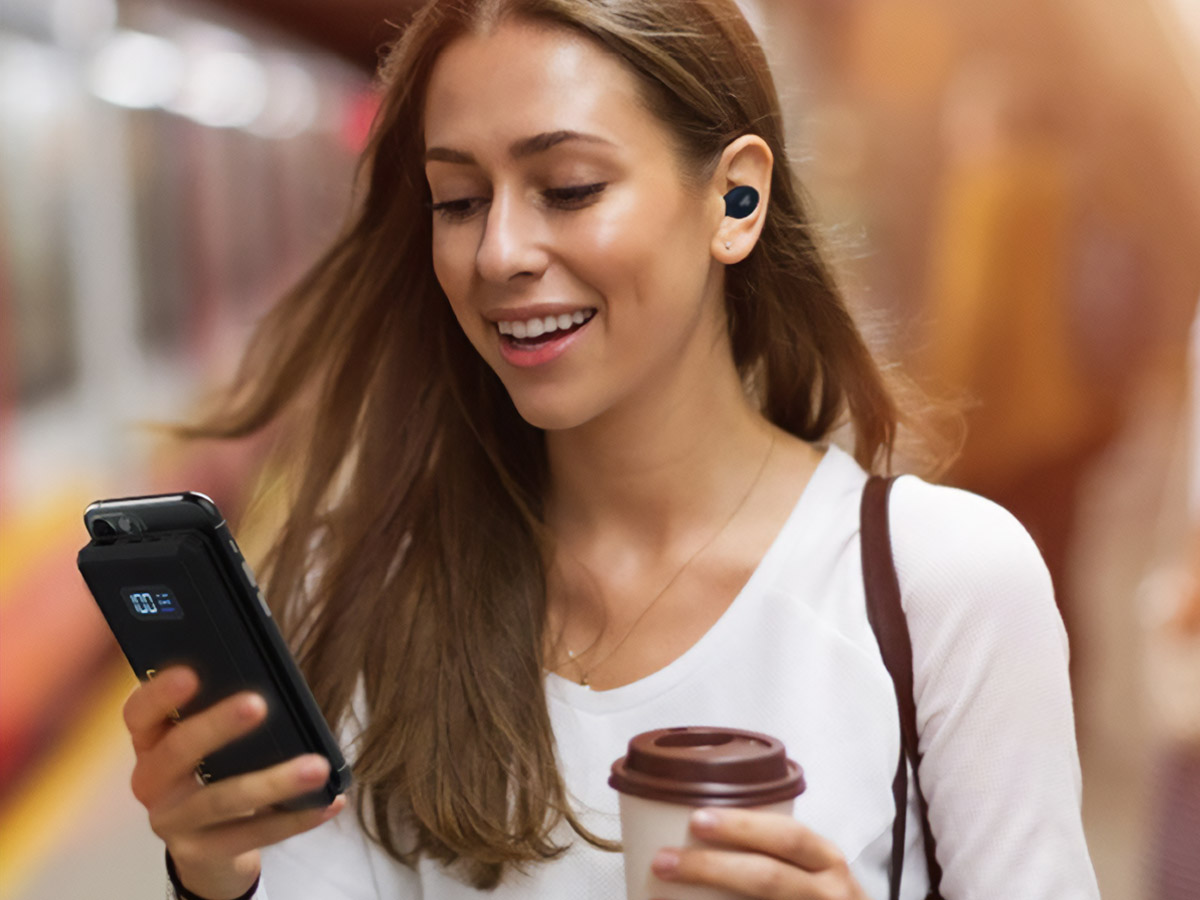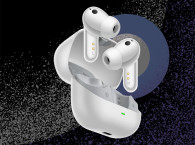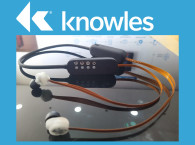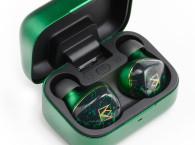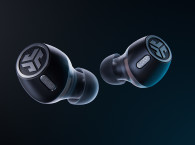Several trends in consumer demand, and the technologies enabling them, are converging as the true wireless stereo (TWS) earphone market continues to grow. Use cases are multiplying, with more consumers using wireless earbuds for a diverse and varied set of applications. Music enjoyment is still the number one use case but others growing in popularity include watching videos, listening to podcasts and audiobooks, Internet meetings, conversation enhancement, voice assistants, and gaming. All of these benefit from improved audio quality.
Active Noise Cancellation (ANC) is also becoming more important. In fact it is almost table stakes for any new TWS design [1]. Pre-pandemic, its growth stemmed from people using it for commuting or travel. In the last couple of years, it was also driven by people spending more time working from home and wanting a quiet, focused space. As “normal” life returns and people wear their TWS earphones in varied environments, adaptive or intelligent ANC demand will grow. Adaptive ANC allows appropriate amounts of external sound to be heard according to circumstances, increasing safety and convenience while blocking annoying or even dangerously loud noise.
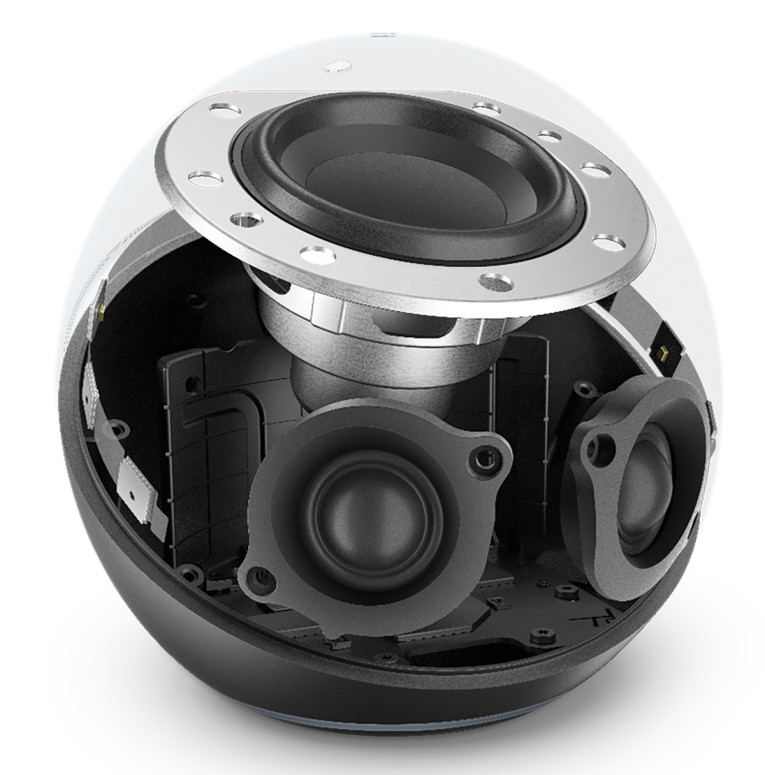
Another exciting development is the rise in popularity of hearing personalization (for streaming audio) and enhancement (for speaking with others, especially in noisy environments) [2]. They are the vanguard of technologies that promise to improve the well-being of TWS users through better perceived music quality, reduced listening fatigue during meetings, and less stress in social settings. In combination, these use cases are driving the need for longer battery life and smaller, more comfortable form factors.
Above all these trends, sound quality continues to be at or near the top of the list [3], [4]. Increasingly, improved audio across other consumer products including televisions, automobiles, and smart speakers, such as the Amazon Echo with “upward firing woofer and dual tweeters for rich, detailed sound” [5] is raising expectations for TWS earphones too.
The proliferation of hi-res subscription music services (e.g., Amazon Music HD) further drives this need. The Spotify HiFi pre-launch announcement [6] in February 2021 stated, “High-quality music streaming is consistently one of the most requested new features by our users.”
Consumers want hi-res, premium sound through their TWS earphones while supporting the newest use cases, and they want to be able to wear them for long periods of time without worrying about battery life or any compromise to comfort. To achieve this, there are several acoustic design and development challenges. I will discuss these challenges, as well as what OEMs and product designers need to know about creating TWS products that satisfy consumer needs while simplifying design and production.
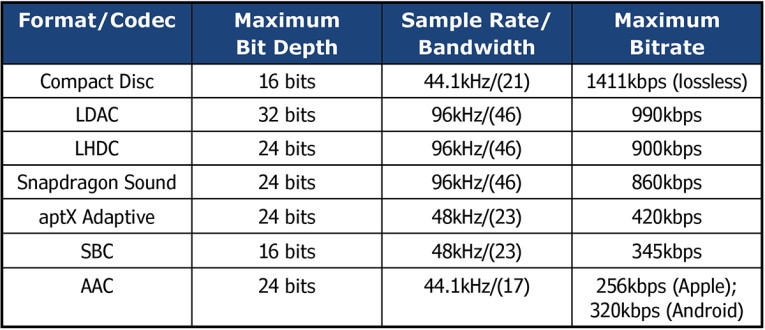
The Streaming Audio Ecosystem and TWS Earphones
In the early days of TWS earphones, audio quality took a back seat to solving basic challenges. These included improving connectivity and battery life. It wasn’t until Apple released the first-generation AirPods in 2016 that the user experience was sufficiently refined to create mass-market appeal. Later came ANC with mainstream brands Sony and Apple introducing products in 2019. At the time, there was little impetus for expending efforts on premium sound because hi-res music streaming wasn’t widely available. Some companies, notably Anker/Soundcore with their Liberty 2 Pro model, got ahead of the trend. But by and large, audio quality was not top of mind for brands designing TWS earphones.
All that changed last year with the Spotify Hi-Fi teaser and especially Amazon Music dropping the surcharge for its lossless tier in response to the launch of Apple’s equivalent. Now, suddenly, it looked as though TWS earphones were behind the curve in terms of audio quality. While purists at the time opined that it was not yet possible to transmit lossless audio streams via Bluetooth, the truth is that very good codecs exist to take advantage of the improved quality of streaming music. Two of them, LDAC and LHDC, even earned the Japan Audio Society’s designation “Hi-Res Audio Wireless.”
LDAC is part of the Android Open Source Project, making it widely available on Android phones. Qualcomm, which has the advantage of also supplying chips for many of the world’s mobile phones, has also been steadily improving its codecs to deliver hi-res audio through Bluetooth. Most recently, it announced support for CD-quality lossless transmission, ending the last remaining argument about the inherent deficiency of Bluetooth streaming.
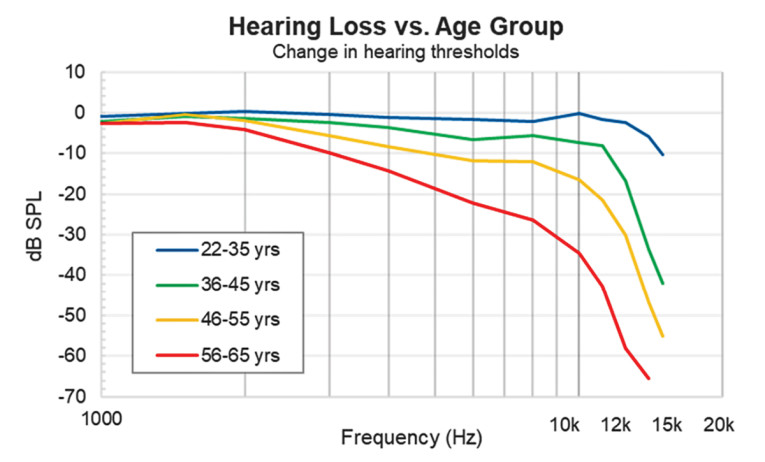
Can People Hear the Difference?
To enjoy hi-res audio, the entire delivery chain has to be optimized for the additional fidelity — including the listener’s hearing response. It is a fact of life that most people’s treble response rolls off as they age. This is one of the drivers behind the development of over-the-counter hearing aids. However, degradation begins in the treble and therefore affects the perception of music before one notices difficulty in understanding speech.
I once arranged an earphone demo for a hybrid woofer-tweeter speaker system in which the tweeter could be switched on or off. Each person listened and gave feedback. The younger people all loved the two-way driver but the older listeners couldn’t hear the difference, likely because of age-related hearing changes.
This potential drag on hi-res audio adoption is countered by the increasing popularity of hearing personalization, not to be confused with hearing enhancement (hearing aid function). Personalization refers to streaming audio, not the microphone response, and is intended to enable more people to get full enjoyment from their music. The increasing demand for premium sound and hi-res audio goes hand-in-hand with hearing personalization. Today, a number of popular brands offer personalization including Skullcandy (with Mimi) [7], Jabra [8], Apple [9], and Anker/Soundcore [10], to name a few.
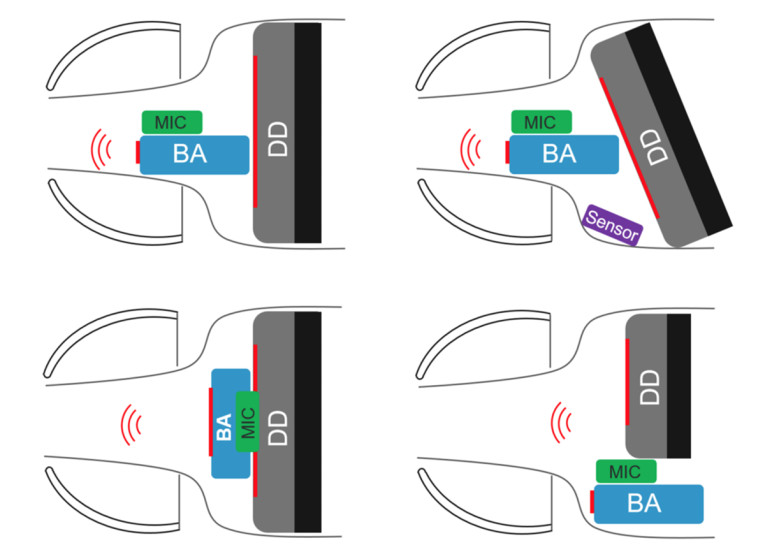
Meeting the Challenge of Delivering Hi-Res Audio to the Mass-Market
Supporting ANC, hi-res audio, and hearing personalization, while driving longer battery life and improved comfort, increases the challenges for the acoustic designer. ANC requires a speaker that can provide high bass drive levels with low total harmonic distortion (THD). That same speaker must support extended treble for premium music quality, with sufficient overhead to support adding gain for personalization. This is a tall order when simultaneously driving the speaker size down to improve comfort, support room for a bigger battery, additional features, or a smaller form factor.
A hybrid driver with a dynamic woofer and a balanced armature (BA) tweeter is an ideal solution in which both speakers play to their strengths. Dynamic speakers are excellent for driving the bass necessary for ANC, including a vented opening for occlusion reduction. But designing for optimum bass often comes at the sacrifice of treble performance in the smallest speaker sizes. On the other hand, BAs have always been known for excellent treble performance, high sensitivity and output, and small size. Employing a dedicated BA tweeter allows one to use a true woofer designed for maximum bass in the smallest possible size. The BA tweeter delivers hi-res audio capability with plenty of headroom for hearing personalization.
In addition, separating the woofer and the tweeter creates more flexibility in the layout. A single full-range speaker must be located close to the eartip to maximize treble extension. However, a woofer may be located further back, or mounted off-axis if desired, with the tweeter positioned closer to the ear tip. Since the BA tweeter is very small, this is easy to accomplish even when an ANC microphone and other sensors are also employed.
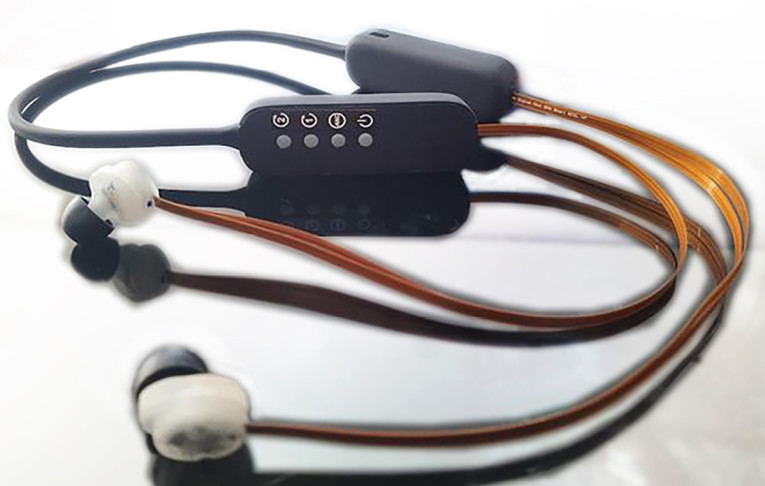
Avoiding Feedback
Another issue can arise when hearing personalization, especially hearing enhancement, is employed. Boosting the treble in a full-range dynamic speaker can cause feedback through the exterior microphones. To avoid this, the speaker must be acoustically isolated. This can come at a cost of increased size or sub-optimum layout. But a BA tweeter is already a fully enclosed system. Tests have shown that BA tweeters can support 20dB more gain before feedback compared to dynamic speakers.
The Knowles TWS Development Platform
Ever at the forefront of audio system innovation, Knowles has created a powerful, configurable platform for developing TWS earphones with premium features [11]. Ultimately, the platform will enable OEMs to decrease time to market by porting pre-tuned hardware and software to a user-defined TWS design.
The kit’s pre-configured Knowles earbuds feature proprietary multi-microphone arrays, including a high-performance, low-power Everest digital microphone; voice vibration sensor; and a choice of drivers including a hybrid using a BA tweeter and a small dynamic woofer developed by Ole Wolff in partnership with Knowles [12]. A powerful, flexible IA8201 AISonic audio edge processor enables running advanced voice and AI algorithms form a growing universe of partners in the audio, voice, and hearing spaces.
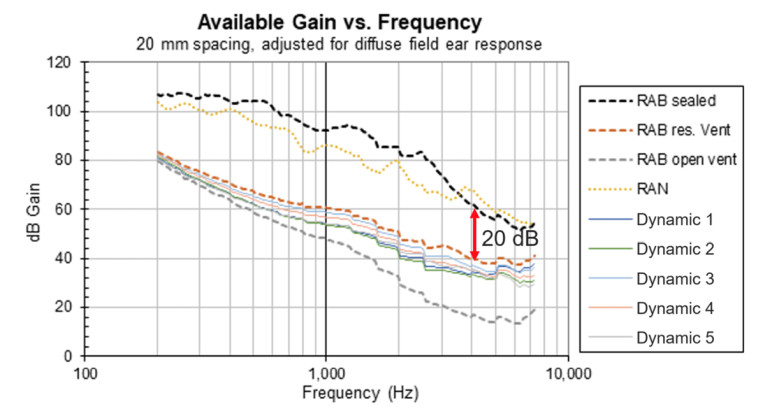
Conclusion
As the demand for TWS continues to grow, designers face an uphill battle to develop earphones that can check all the boxes of consumer preference: comfort, battery life, and inclusive premium sound. Those that can effectively leverage the latest design techniques, such as integrating balanced armature tweeters in a hybrid configuration, will be able to achieve TWS designs that both delight consumers and reduce manufacturing cost and time to market. aX
This article was originally published in audioXpress, April 2022.
References
[1] Qualcomm, “2021 State of Sound Report,” p. 12,
www.qualcomm.com/media/documents/files/snapdragon-soundscape-experience-the-state-of-sound-2021-report.pdf
[2] Ibid, p. 18
[3] Ibid, pp. 5, 8
[4] Sonova, “Investor & Analyst Day 2021 Handout,” p. 56, September 14, 2021
https://relaunch.sonova.com/cdn/ff/Y30b12YcKlOeU1vNnIz_TMCj5X-6UTv6tDCzKR_fSEg/1631617253/public/2021-09/IR%20Day%202021_Handout_2.pdf
[5] Echo (4th Gen), www.amazon.com
[6] Spotify, “Five Things to Know About Spotify HiFi,” February 2021,
https://newsroom.spotify.com/2021-02-22/five-things-to-know-about-spotify-hifi
[7] Mimi, “Skullcandy and Mimi Hearing Technologies Partner to Foster Hearing Health,” November 2021, www.mimi.io/press/skullcandy-and-mimi-hearing-technologies-partner-to-foster-hearing-health
[8] Jabra, “What is MySound?” www.jabra.com
[9] Apple, “Customize headphone audio levels on your iPhone or iPad,” https://support.apple.com/en-us/HT211218
[10] Soundcore, “HearID,” https://us.soundcore.com
[11] Knowles, “True Wireless Stereo (TWS) Development Platform,”
www.knowles.com/tws-development-platform
[12] “Knowles Partners with Ole Wolff to Offer Compact Hybrid Driver for TWS Earphones,” audioXpress, December 2021,
 About the Author
About the AuthorAndrew Bellavia is director of market development at Knowles Corp. With a lifelong passion for audio and more than 30 years of experience in the audio field, Andrew is an advocate for innovations in hearing care and sound devices in both his professional and personal endeavors. For nearly 10 years, he has worked to bring Knowles’ world-class acoustic solutions and balanced armature technology to market for innovators, leaders, and end users in the hearing health, in-ear monitor, and premium sound markets.



